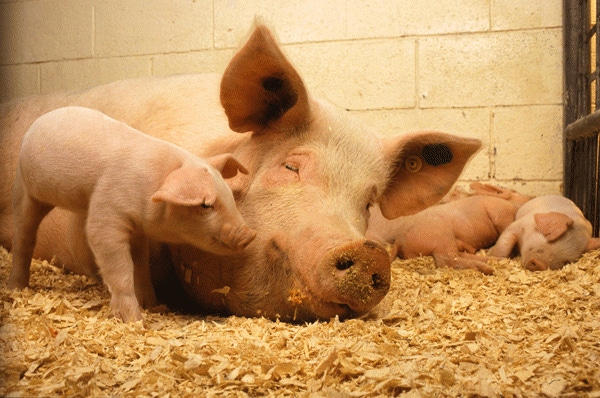April 7, 2011

Both farm level and wholesale hog and pork prices averaged about $20 per hundredweight (cwt) higher than last year in the first quarter of 2011. Higher prices were recorded in spite of larger pork supplies.
The estimated commercial hog slaughter was near year-ago levels, while pork production was up almost 2 percent because the average hog carcass weights increased from 204 to 208 pounds.
Interestingly, higher weights occurred in spite of an 85 percent increase in corn prices compared to the first quarter of last year.
Higher hog prices are being fueled by a robust export market for pork and some improvement in domestic demand.
The U.S. Department of Agriculture is forecasting about a 7 percent increase in pork exports for the first quarter of 2011 and more than a 10 percent increase for the year. Actual pork export numbers for January (the latest month for which data are available) posted a 17 percent increase.
Leading U.S. export markets for pork include Japan, with 30 percent of the market, followed by Mexico at 24 percent, Canada with 10 percent and South Korea about 5 percent.
In January, pork exports to Japan were up almost 23 percent from last year. Pork exports to Mexico were unchanged, Canada down 5 percent and South Korea up a whopping 144 percent. South Korea’s worst foot and mouth disease outbreak in history resulted in the depopulation of about 30 percent of the 10 million head swine herd. Pork is the leading meat consumed in Korea, so more pork imports were required to offset the decline in domestic production.
Disaster in Japan causing uncertainty
The catastrophic earthquake, tsunami and nuclear disaster in Japan have caused uncertainty in the U.S. hog market. After the tsunami hit Japan on March 11, June lean hog futures prices declined about $7/cwt through the subsequent four trading days. However, since then, hog futures prices have increased to near the contract highs recorded in mid- to late-February.
About 19 percent of Japan’s swine herd resided in the northern geographic area hardest hit by the earthquake and tsunami. It is not known what impact the devastation will have on Japan’s pork production, consumption and imports.
Two other countries also recorded triple-digit percentage gains in January U.S. pork exports. Exports to China increased to almost 26 million pounds from less than 1 million pounds last year. Pork exports to Russia were more than 6 million pounds in January, compared with just 81,000 pounds last year.
Another indication of the strong pork export market is the increase in value of by-products, such as lard, which receive premium prices in foreign markets. The hog by-product value on a live animal basis has risen to about $5.20/cwt, compared with $4.50 last year and a five-year average of about $3.60 for this time of year.
Some driving factors that have led to the increase in pork exports are that the economies in other parts of the world, Southeast Asia for example, are recovering faster than the U.S. economy. Also, the decreasing value of the U.S. dollar relative to other currencies makes U.S. pork quite competitive in world markets.
On March 25, The USDA’s National Agricultural Statistics Service released its quarterly hogs and pigs report. Most hog inventory categories on March 1 recorded less than a 1 percent increase compared with year-earlier numbers.
All hogs and pigs on March 1, at 63.96 million head, were up 0.6 percent from 2010. About 5.79 million were kept for breeding purposes, which was up 0.5 percent.
Market hogs totaled about 58.2 million head, which was an increase of just 0.6 percent from a year ago. However, market hogs were down almost 5 percent from the numbers recorded on March 1, 2009.
Looking ahead, farrowing intentions for March through May and June through August were down 2.6 percent. If these projected farrowings materialize, along with expanding exports, prices should be supported in the second half of the year. However, keep in mind that fourth-quarter production usually is at a seasonal peak, with corresponding seasonally lower prices.
Midsummer lean hog futures contracts are trading at more than $10 cwt higher than late-fall contracts, which reflects that seasonal price pattern.
You May Also Like




